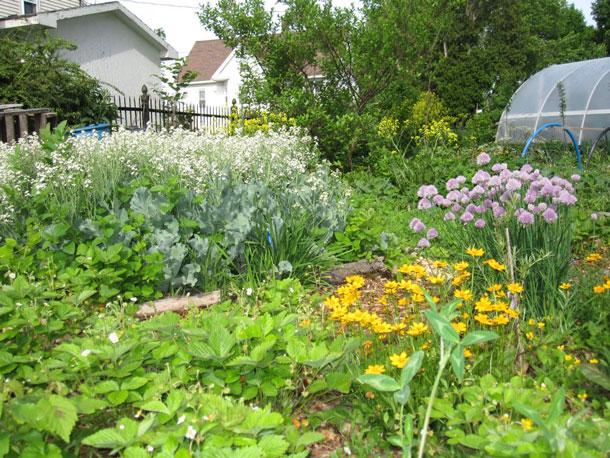How a permaculture garden led to a bountiful harvest — and true love
A bountiful garden thrives in a formerly degraded backyard lot in Holyoke, MA.
With nurturing, even a degraded backyard can yield a delicious bounty of produce — and maybe even true love.
Eric Toensmeier and Jonathan Bates have become accomplished permaculture gardeners in an unlikely place: a small, degraded backyard in Holyoke, Massachusetts. Permaculture is an agricultural system that is highly integrated, sustainable and self-sufficient. “Permaculture is meeting human needs while improving ecosystem health,” Toensmeier says.
The two men transformed the backyard of their gray duplex into an urban oasis. The yard is just 1/10th of an acre, but produces almost all of the fruits, vegetables and eggs two families need.
When they found the lot, it had three different kinds of terrible soil, Toensmeier says — sand, gravel fill and compacted clay with chunks of concrete and rebar in it.
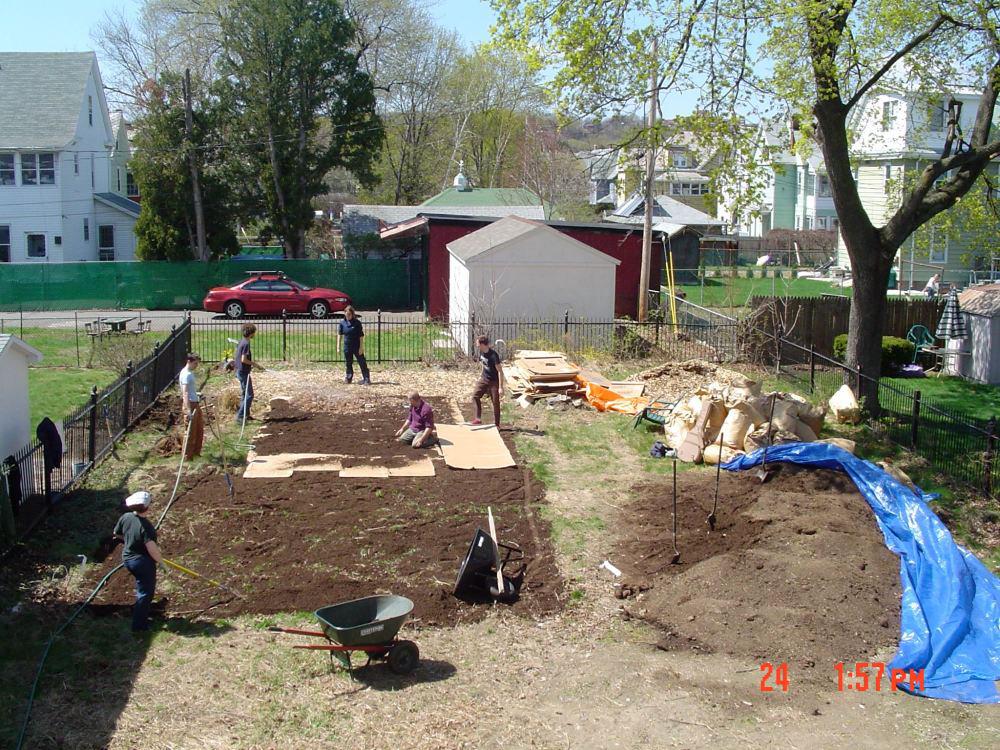
“We actually thought it was perfect,” Toensmeier says “We wanted to be somewhere where the scale at which we were operating was relevant to lots of people. So, we were looking to be in the city.”
“We also wanted a place that was as beat up as you can imagine,” he adds, with a laugh, “because we wanted to set the bar high and say, ‘If we can do it you can totally do it.’”
And perhaps most surprisingly: They wanted to use their garden as a chance to find love.
Now, each area of the lot mimics a natural setting where vegetables, fruits and other edibles grow.
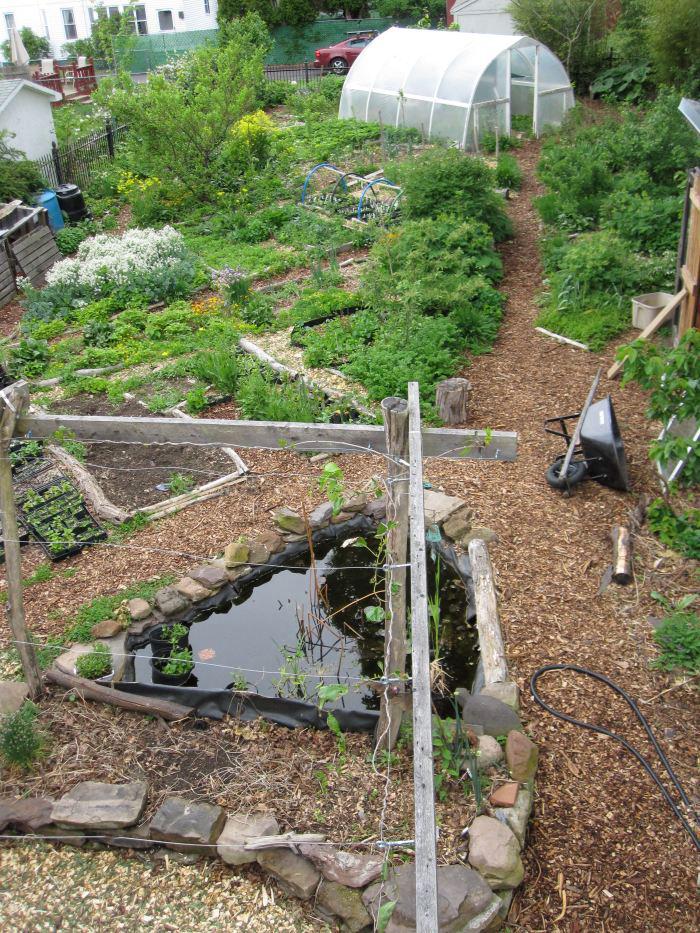
One small portion imitates the structure of a forest with trees, shrubs, herbaceous species, vines and fungi, that are edible and work together as an ecosystem, Toensmeier says. At the lowest level, there’s broccoli, ramps, ginger and violets. Above them grows a gumi bush, one of their many Asian species. The bush fixes nitrogen and produces berries that taste a bit like rhubarb. Shading over them all is an American persimmon tree.
In the back corner of the lot stands a bamboo grove and a mini-orchard that boasts an Asian pear tree with three different varieties grafted onto it — an early season fruit, a mid-season fruit and a late season fruit. The tree yields about 150 pears a year. In the same area grow blueberries, service berries, raspberries, hazelnuts, grapes, rhubarb, perennial leaks, elephant garlic and strawberries. “In just this tiny corner, which is about 20 by 25 feet, we have all those different plants fruiting and producing excellent food for us,” Toensmeier says.
Toensmeier recommends that anyone looking to have a garden like their's start with berries. “They don’t take up a lot of space. A lot of them can handle some shade. They’re beautiful, they taste good and they’re mostly very easy to take care of,” he explains. “And every year you can add another bed.”
The garden beds are bordered with old logs. They’re inoculated with spores to grow edible mushrooms, but Eric says they also form a critical habitat. All the creepy-crawly things you find when you turn over a log are part of the lot’s decomposer ecosystem and its pest control system, as well. A lot of predacious ground beetles, for example, live under the logs and eat pests and weed seeds.
The system works: In seven years Toensmeier and Bates have never had to use pesticides of any kind in the garden. Instead, they provide habitat for garden helpers like ladybugs and praying mantises.
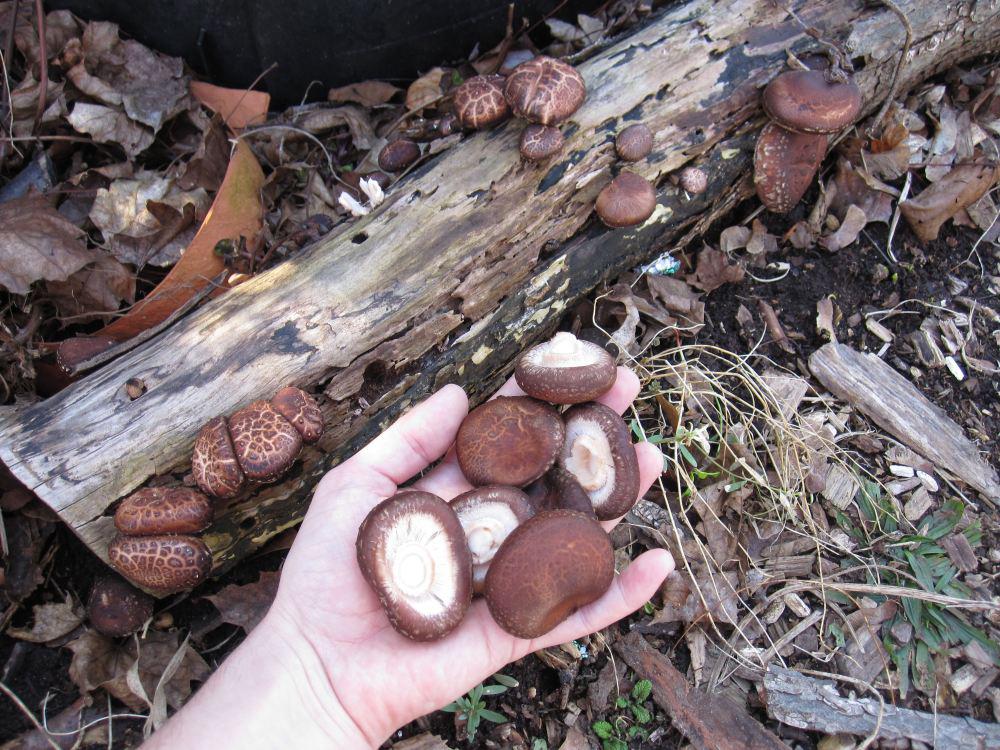
Bates designed and built a small greenhouse, where they grow annual vegetables and tropical plants. He says walking into the greenhouse is like going on vacation.
“Instead of spending a couple thousand dollars going to Florida with a family for a week, we invested that money in building this greenhouse and now we’re living in northern Florida,” he says. “We have things like citrus, Chilean guava, fig and hardy avocado. We also have tree collards, which get to be 11 feet tall and are perennials.”
Recycled granite curbstones define a raised bed inside the greenhouse. There are also three large tanks containing an aquaponics system, with catfish and 800 gallons of water. Bates says the granite and the water collect heat during the day and radiate it back at night to make the greenhouse up to 10 degrees warmer.
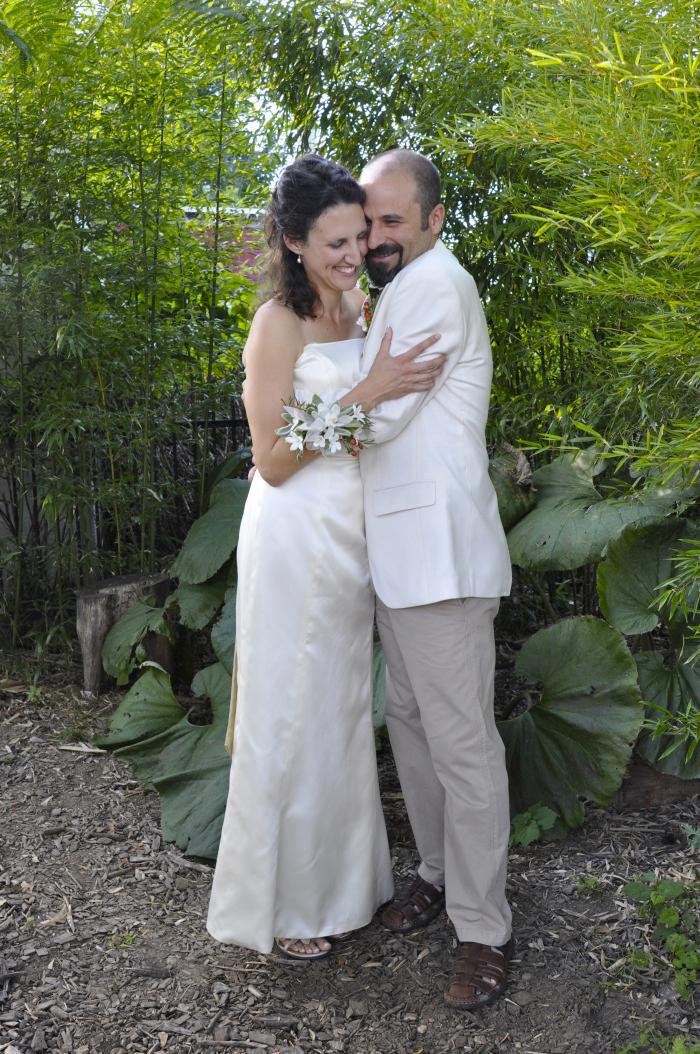
When Bates and Toensmeier started their project, they had simple goals: to walk out in the yard and get a handful of fruit each day of the summer, greens every day of the year, and to find the loves of their lives. Mission accomplished on all accounts. Both men are now married to women they met through the interest in their project.
Bates says he knew the garden was a success after five or six years, when the plants really took root and started to produce in abundance. “There’s an explosion of life, really, and at that point, this idea of mimicking a forest ecosystem really hit home. We really did it,” he says.
This article is based on a story that aired on PRI’s Living on Earth with Steve Curwood.
